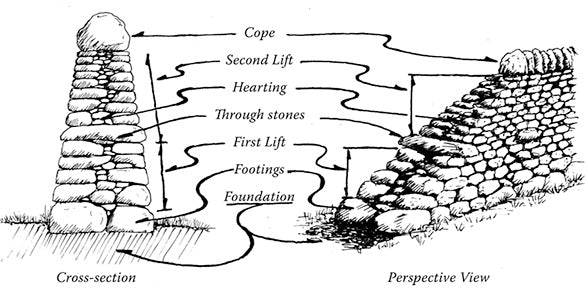
Learning to build a dry stone wall ... and the history of stone walls in America
Ian LamontLast fall, I went to Vermont to join a workshop on dry stone walling hosted by The Stone Trust in Dummerston, Vermont. Dry stone walls are built without any mortar. There was a practical element to my journey (I want to build a wall on a family property), but I also learned the history of stone walls is integral to the history of the United States.

In New England, New York, Pennsylvania, Kentucky, and elsewhere, rural homeowners may maintain stone walls that follow old lot lines, or build new walls to create a rustic touch. In these places, it’s common to see fieldstone walls next to country lanes or running through the middle of the woods, like the example below at the Nobscot Scout Reservation in Massachusetts, 15 miles west of Boston. How did they get there?

The oldest were constructed by indigenous peoples for ceremonial purposes. From the 1600s through the mid-1800s in the northeast and Appalachia, farmers had no choice but to build them if they wanted to grow crops. They would clear glacial rocks from their fields and pile the fieldstones along property lines or to enclose livestock.

Dry stone walls were built to higher standards. The techniques were employed by nearly every ancient culture, from Ancient Greece to Great Zimbabwe. The styles used in many parts of North America were brought over from Britain, Ireland, and Scotland.

I learned that the vertical “cope stone” plates at the top of the wall (see photo above) were not decorative, but add thousands of pounds of additional weight that help stabilize the entire structure.
Go back far enough in your family tree, and you will find ancestors who knew how to build dry stone walls. It was an ingenious, economic, and practical way to build walls that could last decades or even hundreds of years - something that any genealogist or history buff can appreciate!







